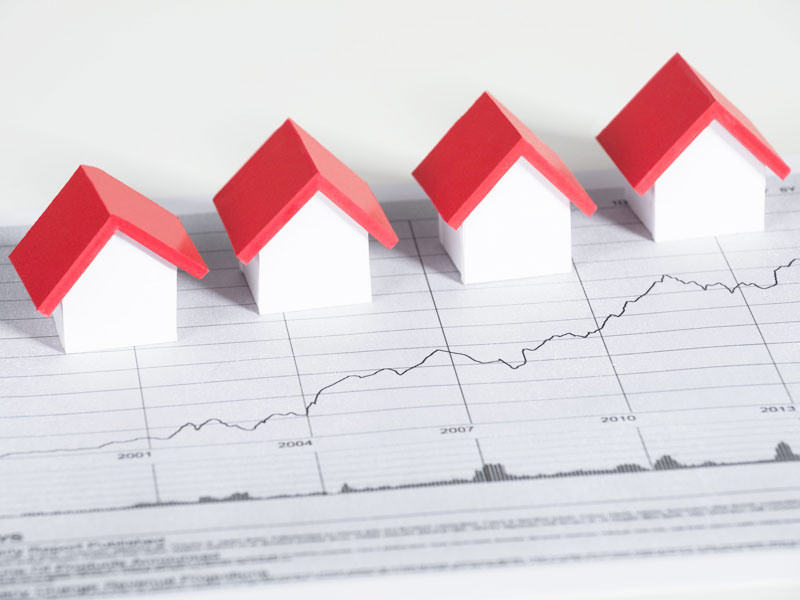
Key takeaways
If you've ever tried to make sense of the property market, you've likely found yourself staring at median house prices. But median prices can be misleading, especially when it comes to housing affordability.
Median house prices are a flawed way to understand market dynamics, particularly in today's Australia, where the socio-economic landscape has dramatically shifted.
Australia is no longer a bell-curve-shaped society where most people sit comfortably in the middle. Instead, it's a U-shaped economy with many people at the lower and upper ends of the income spectrum, with fewer in the middle.
Australia's job market has changed from manufacturing to a knowledge-based economy, dominated by high-skilled, high-paying roles. As a result, the middle-class has been eroded and the workforce is increasingly divided between high-income earners and those in low-paid, often precarious work.
Local insights matter more, so look beyond the headline-grabbing median price and focus on more granular data. This gives a clearer picture of what people are actually buying and living in, making it far more relevant for homebuyers and investors.
The future of housing affordability is complicated, as politicians face significant challenges. However, demographic shifts may slowly force change, with more policies encouraging the construction of affordable housing, easing the tax burdens on new developments, or providing incentives that genuinely help first-home buyers get into the market.
If you’ve ever tried to make sense of the property market, you’ve likely found yourself staring at median house prices.
It’s the statistic splashed across every news outlet, property report, and conversation around real estate.
But while median prices are easy to grasp, they often fail to tell us what’s really happening on the ground, especially when it comes to housing affordability.
In a recent episode of our Demographics Decoded podcast, Simon Kuestenmacher and I explained why this metric can be misleading and explored more meaningful ways to gauge the true cost of owning a home.
For weekly insights and strategic advice, subscribe to the Demographics Decoded podcast, where we will continue to explore these trends and their implications in greater detail.
Subscribe now on your favourite Podcast player:
Why median house prices fall short
Median house prices represent the middle point of all property sales in a specific area—half the homes sold for more, and half sold for less.
While this sounds straightforward, it’s actually a flawed way to understand market dynamics, particularly in today’s Australia, where the socio-economic landscape has dramatically shifted.
Historically, the median price was useful because it captured the middle of the market in a society that was predominantly middle class.
But Australia is no longer that bell-curve-shaped society where most people sit comfortably in the middle.
Today, our economy resembles more of a U-shape—many people at the lower and upper ends of the income spectrum, with fewer in the middle.
This shift means that the typical “median” home is no longer representative of what the average Australian can realistically afford or what they aspire to own.
For instance, in a society where middle-income earners were once the backbone, the median price might have represented the type of home that the majority lived in.
But in our current U-shaped economy, the middle ground is increasingly hollowed out.
Lower-income earners can’t afford median-priced homes, and higher-income earners wouldn’t consider living in them.
This disconnect makes the median price largely irrelevant—it’s neither representative nor aspirational.
Understanding the socio-economic shift
Let’s delve deeper into why this shift has occurred.
The erosion of the middle class has roots in several economic and social changes.
Australia’s job market, for example, has moved away from manufacturing and middle-skilled jobs toward a knowledge-based economy dominated by high-skilled, high-paying roles.
At the same time, lower-skilled jobs have also grown, creating a polarized employment landscape.
The Australian Bureau of Statistics (ABS) categorizes jobs into five skill levels.
The middle-skill jobs (skill level 3), which include trades like plumbing and electrical work, were once the backbone of Australia’s middle class.
However, these jobs have been in decline due to economic shifts and policy decisions that made technical training more expensive and less accessible.
As a result, many opted for university degrees, pushing them into higher-skilled jobs, while others remained in lower-skilled roles.
This dynamic has left us with a workforce increasingly divided between high-income earners and those in low-paid, often precarious work.
With fewer people occupying middle-income roles, the demand for housing has become polarised.
Developers naturally gravitate toward the high end of the market, where margins are more attractive.
Meanwhile, the kind of mid-range homes that might have been accessible to the average worker are no longer being built in sufficient numbers.
This drives up the median price, making it a poor reflection of what’s actually happening across different market segments.

Local insights matter more
Given this complexity, how should you measure affordability?
The key is to look beyond the headline-grabbing median price and focus on more granular data.
Consider specific suburbs, property types, and even individual streets.
For example, in a suburb like Melbourne’s Brighton, you’ll find everything from multi-million dollar mansions with beach views to modest single-fronted homes just a few blocks away.
A single median price simply can’t capture these vast differences.
This approach becomes even more critical in areas with diverse property types.
In new outer suburbs or greenfield developments, where homes are often uniform in size and style, median prices can provide a more accurate snapshot.
But in established, diverse suburbs, where the housing stock varies widely, the median becomes a crude and often misleading measure.
A more accurate way to assess the market is to look at specific segments within a suburb, such as the median price for three-bedroom homes, rather than all properties lumped together.
This gives a clearer picture of what people are actually buying and living in, making it far more relevant for homebuyers and investors alike.
Affordability vs. price: understanding the real cost
Another common confusion is the difference between house prices and housing affordability.
Just because house prices are high doesn’t necessarily mean homes are unaffordable.
Affordability is better understood by comparing house prices to incomes.
In other words, how many years of your income would it take to buy a home?
In the 1960s, the typical house in Australia cost around four times the median annual income.
Today, in Sydney, that figure has skyrocketed to around 14 times, and in Melbourne, it’s about 10 to 11 times.
This change means that the same type of home now requires a much larger chunk of your income, making it harder to save for a deposit and pay down a mortgage.
This isn’t just about inflation—it’s also about our changing expectations.
Houses today are larger, more luxurious, and come with amenities that were once considered extravagant.
We’ve swapped smaller homes with shared bedrooms and basic layouts for expansive residences with ensuites, media rooms, and home offices.
Even the lot sizes have shrunk as the focus has shifted to maximising living space over land.
We also can’t ignore the impact of government policies and market dynamics that exacerbate these affordability issues.
Taxes on land, infrastructure and new developments, along with a lack of incentives for building affordable housing, mean that the market continues to skew towards higher-end properties.
Developers are naturally inclined to build where the margins are better—at the top end of the market.
Even when new homes are built, they often don’t target the first-home buyer market but rather cater to those looking to upgrade or invest.
This creates a housing market that’s increasingly out of reach for young Australians, who often can’t afford the deposit, let alone the ongoing mortgage repayments.
The future of housing affordability: what can we expect?
Looking ahead, will housing ever become affordable again?
The short answer is - it’s complicated.
Politicians have the power to make housing more affordable through policy changes, but they face significant challenges.
Measures like removing first-home buyer grants, cutting stamp duties, or reducing taxes on developers could help, but these aren’t easy sells.
Lowering house prices is a politically risky move because two-thirds of Australians are homeowners with a vested interest in keeping home prices high.
However, demographic shifts may slowly force change.
As our population ages and the large cohort of baby boomers begins to pass on, there will be a natural increase in housing supply as their homes come onto the market.
At the same time, younger generations, increasingly unable to afford homeownership, are becoming a larger, and therefore, more significant voting bloc.
This shift in political power could eventually lead to policies that make housing more accessible, particularly for first-home buyers and renters.

In the next decade, we might see more policies encouraging the construction of affordable housing, easing the tax burdens on new developments, or providing incentives that genuinely help first-home buyers get into the market.
But until then, the best strategy is to focus on the data that truly reflects your circumstances—specific suburbs, property types, and income ratios.
These measures offer a clearer and more accurate picture of what’s happening in the housing market and help you make better decisions as an investor or homebuyer.
In short, forget the median house price—dig deeper into the data that matters.
Only then will you truly understand the realities of housing affordability in today’s Australia.
If you found this discussion helpful, don't forget to subscribe to our podcast and share it with others who might benefit.
Subscribe now on your favourite Podcast player:














